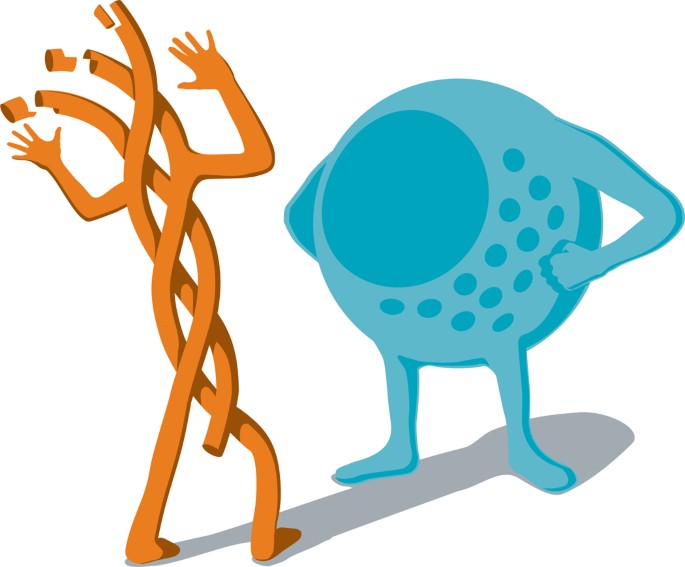
- Select a language for the TTS:
- UK English Female
- UK English Male
- US English Female
- US English Male
- Australian Female
- Australian Male
- Language selected: (auto detect) - EN
Play all audios:
Access through your institution Buy or subscribe Using a mouse model deficient in NFAT cytoplasmic 2 (NFATc2) to examine the response to _Candida albicans_ fungal infection, Granucci, Zanoni
_et al_. showed two distinct phases of the immune response. First, an abscess forms to contain the pathogen; then, ulceration in the skin occurs, which facilitates the expulsion of the
pathogen from the tissue. Abscess formation was reliant on transforming growth factor-β (TGFβ), a pro-fibrotic signal. Although both wild-type and NFATc2-deficient mice were able to initiate
abscess formation, the mutant mice produced abscesses with considerably thicker collagenous walls, a feature attributed to higher TGFβ levels. Importantly, the second ulceration phase did
not occur in NFATc2-deficient animals, suggesting that the 'switch' between phases might rely on attenuating TGFβ activity. To better understand the dysregulation of TGFβ, the
researchers examined the role of its negative regulator IFNγ. Compared with wild-type mice, the mice deficient in NFATc2 showed attenuated IFNγ levels after infection. Furthermore, the
non-ulcerative phenotype could be recapitulated in wild-type animals treated with IFNγ antagonists. On probing, the researchers were able to show that ulceration relied on plasminogen to
plasmin conversion, a process that promoted abscess collagen breakdown. Plasmin levels are regulated by the opposing activities of tissue plasminogen-activating factor (tPA) and plasminogen
activator inhibitor 1 (PAI1); here, IFNγ (which is not widely recognized to have a role in the fibrinolytic pathway) was shown to regulate tPA production. This is a preview of subscription
content, access via your institution ACCESS OPTIONS Access through your institution Access Nature and 54 other Nature Portfolio journals Get Nature+, our best-value online-access
subscription $29.99 / 30 days cancel any time Learn more Subscribe to this journal Receive 12 print issues and online access $209.00 per year only $17.42 per issue Learn more Buy this
article * Purchase on SpringerLink * Instant access to full article PDF Buy now Prices may be subject to local taxes which are calculated during checkout ADDITIONAL ACCESS OPTIONS: * Log in
* Learn about institutional subscriptions * Read our FAQs * Contact customer support REFERENCES * Santus, W. et al. Skin infections are eliminated by cooperation of the fibrinolytic and
innate immune systems. _Sci. Immunol._ 2, eaan2725 (2017) Article PubMed PubMed Central Google Scholar Download references AUTHOR INFORMATION AUTHORS AND AFFILIATIONS * Chief Editor,
Nature Reviews Disease Primers, Mina Razzak Authors * Mina Razzak View author publications You can also search for this author inPubMed Google Scholar RIGHTS AND PERMISSIONS Reprints and
permissions ABOUT THIS ARTICLE CITE THIS ARTICLE Razzak, M. Fibrinolytic and innate systems collide. _Nat Rev Immunol_ 17, 663 (2017). https://doi.org/10.1038/nri.2017.124 Download citation
* Published: 27 October 2017 * Issue Date: November 2017 * DOI: https://doi.org/10.1038/nri.2017.124 SHARE THIS ARTICLE Anyone you share the following link with will be able to read this
content: Get shareable link Sorry, a shareable link is not currently available for this article. Copy to clipboard Provided by the Springer Nature SharedIt content-sharing initiative






